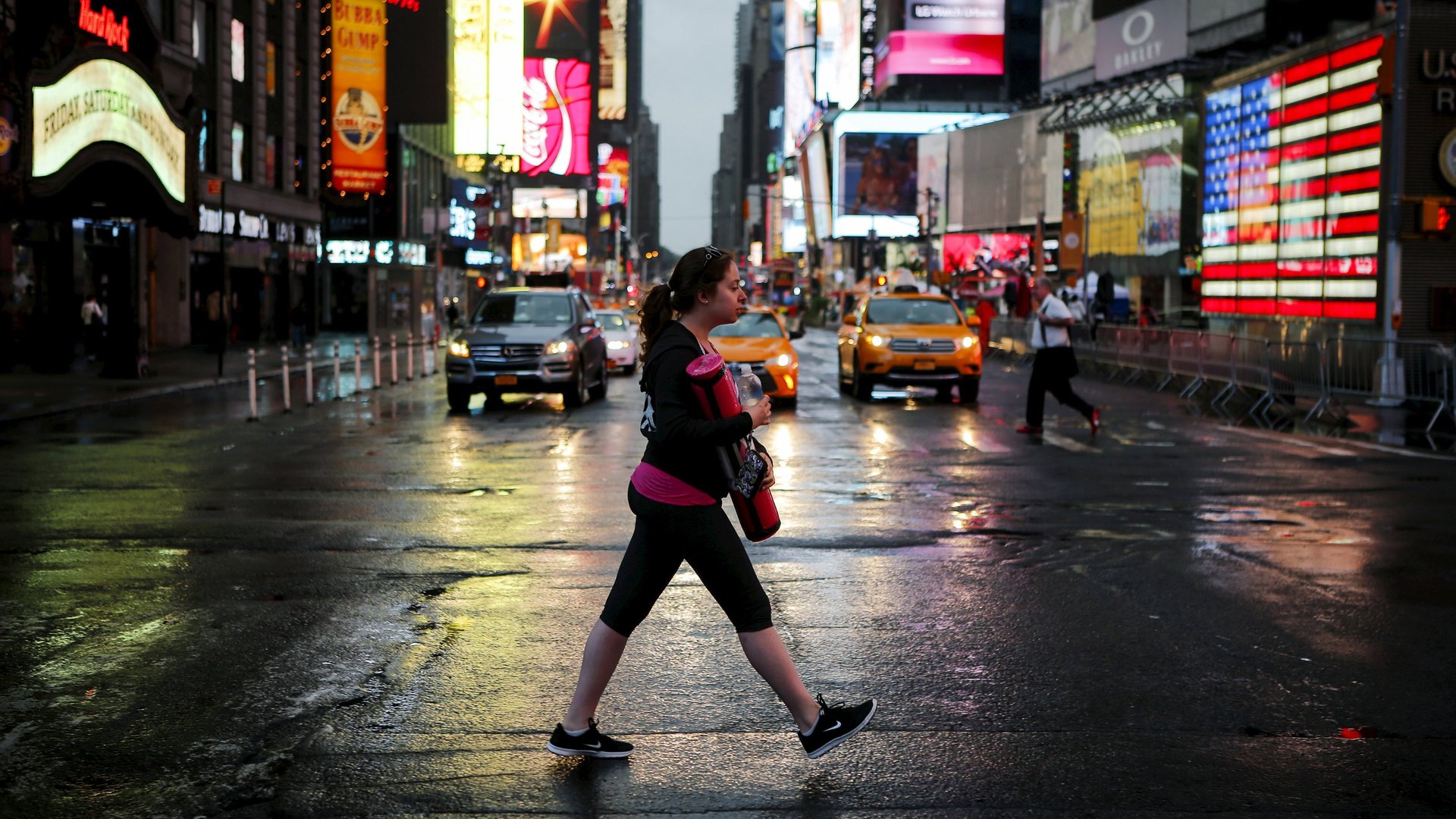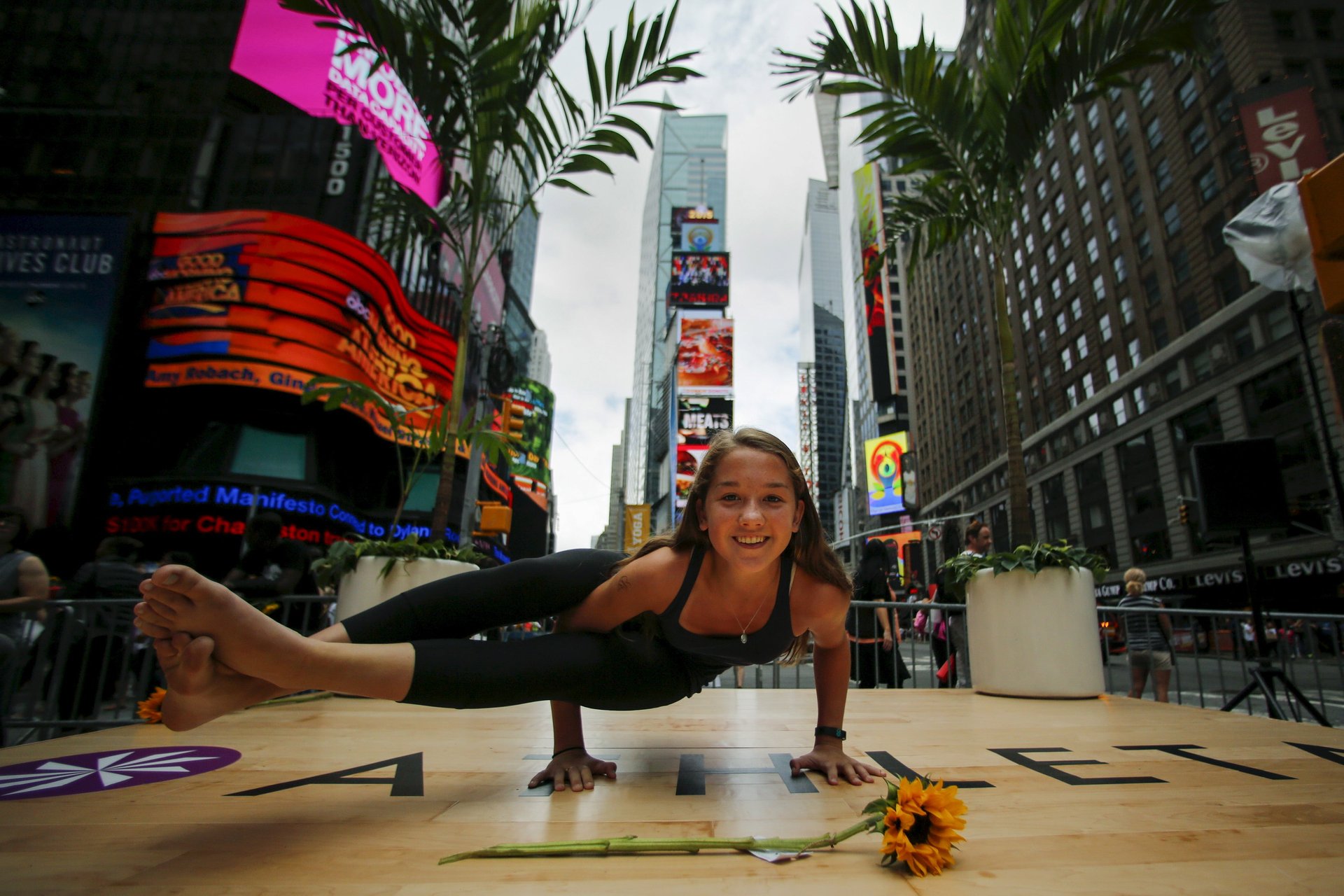The rise of athleisure is eating into the profits of regular clothes
American clothing retailers including Gap, J.Crew, Abercrombie & Fitch, and a slew of department stores are suffering. Mall traffic is down. Shoppers are spending less on clothes and looking for discounts when they do. Amazon and fast fashion are stealing their customers.


American clothing retailers including Gap, J.Crew, Abercrombie & Fitch, and a slew of department stores are suffering. Mall traffic is down. Shoppers are spending less on clothes and looking for discounts when they do. Amazon and fast fashion are stealing their customers.
But there’s another factor hitting these businesses, according to a comprehensive research note by Deutsche Bank. Athletic clothing is taking a bite out of regular clothing’s sales.
“We see athletic apparel boosting the industry, up 4.1% from 2008-2015 on average,” the authors write. “Meanwhile, non-athletic apparel was up only 0.2% during that timeframe and lagged overall apparel in seven of the past eight years. As we believe the athleisure cycle is a bona fide trend with further dollar share shift ahead, we expect the disparity between athletic and non-athletic growth to widen in upcoming years.”
Shoppers’ new love of yoga pants, sweats, and other activewear is great for sales, especially in women’s apparel, unless you’re one of many businesses selling non-athletic clothing.

Regular apparel retailers have blamed the lack of the right cardigan, or blazers for their sales problems. Denim isn’t helping. The skinny jean has become the poster child for the lack of newness that analysts cite as one reason for the sales slump. The decade-old trend isn’t going away anytime soon, but why buy a new pair of skinny jeans if you already have a few pairs in your closet?
“We remain concerned that there is no clear replacement for the skinny jean, a trend that has grown long in the tooth, which we think is necessary for a new silhouette to emerge and inspire women to refresh their closets,” the Deutsche Bank authors write.
Shoppers may not be looking for a new pair of jeans, however, because they’re shopping outside of denim altogether. They want something stretchier, and too comfortable to change out of: athleisure. Denim brands, such as Levi’s, have acknowledged that they’re feeling the encroachment of yoga pants on their turf.
Because athleisure reflects a lifestyle shift as much as a fashion trend, it’s unlikely to disappear in soon, as stretched as the market is. A report last year by Morgan Stanley pegged activewear as a great investment opportunity, especially as it gains status in China and the country’s growing middle class takes up sports.
The Deutsche Bank note mainly focused on analyzing the huge number of stores retailers must close to restore balance to their businesses. It said that more than 800 shops among brick-and-mortar apparel retailers must shut, echoing a separate recent report that also suggested department stores shutter about 800 stores. The retailers best positioned to make the transition to the new retail reality, according to the bank, are those “with less exposure to women’s non-athletic apparel” and the ability to sell online or compete with low-cost retailers.
Meanwhile, teen-centric chain Aeropostale is expected to file for bankruptcy protection (paywall) this week.